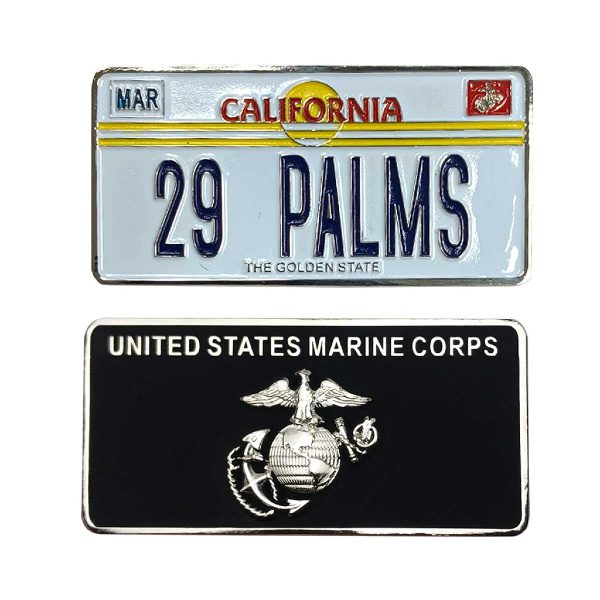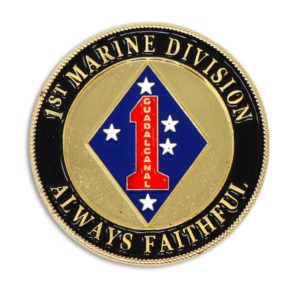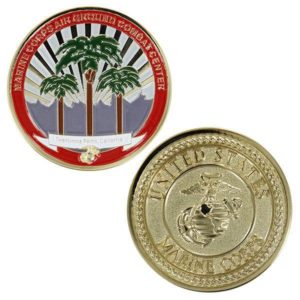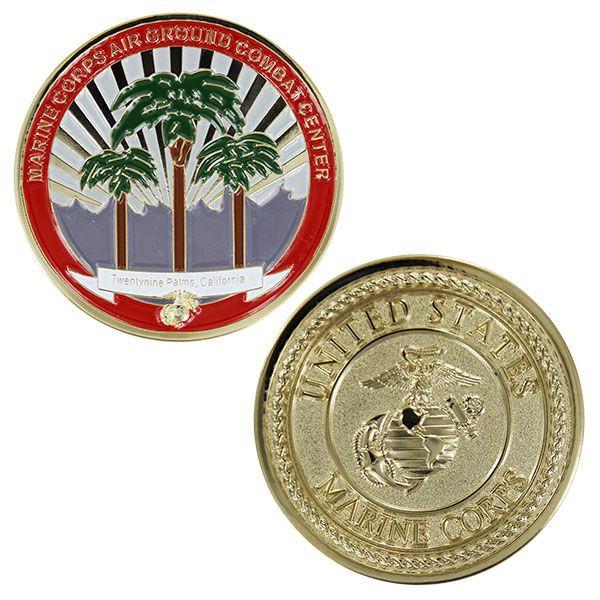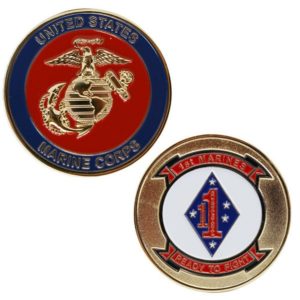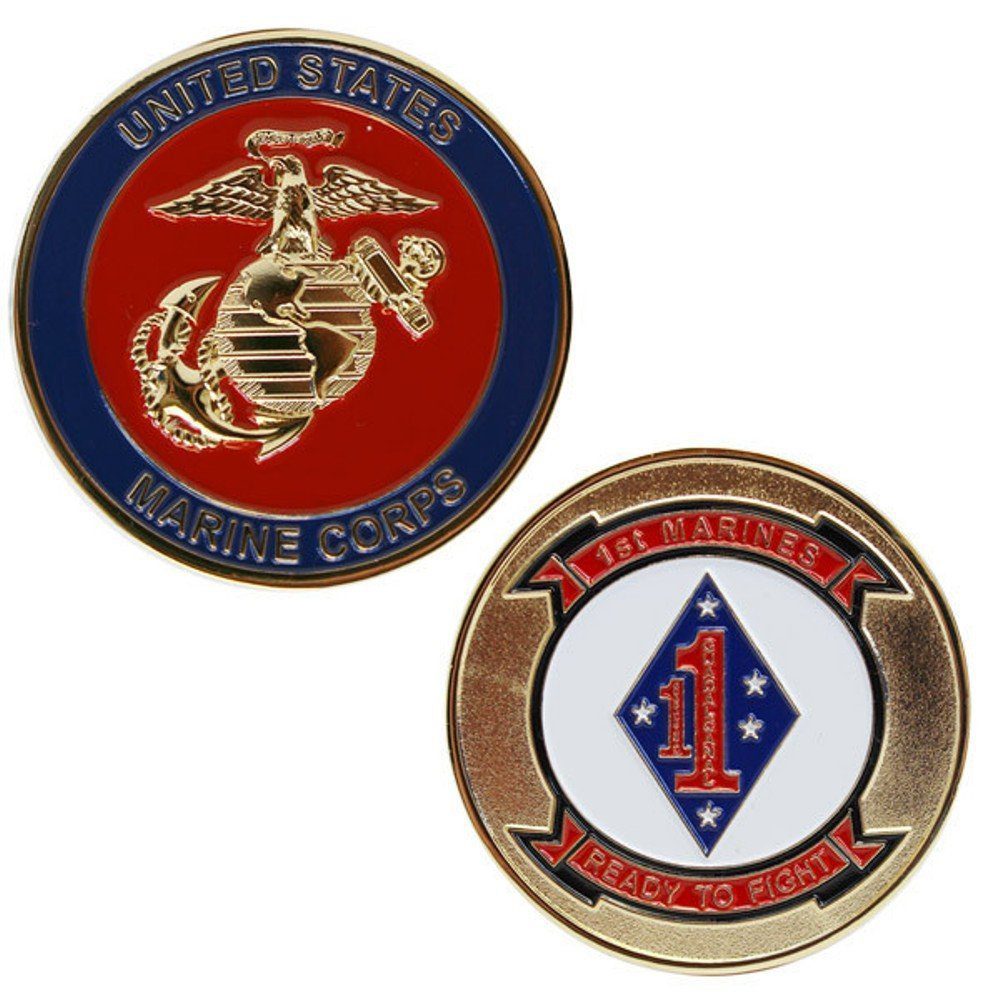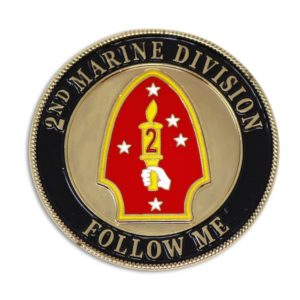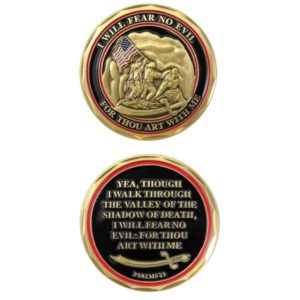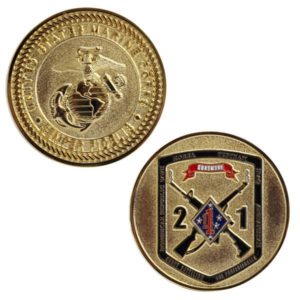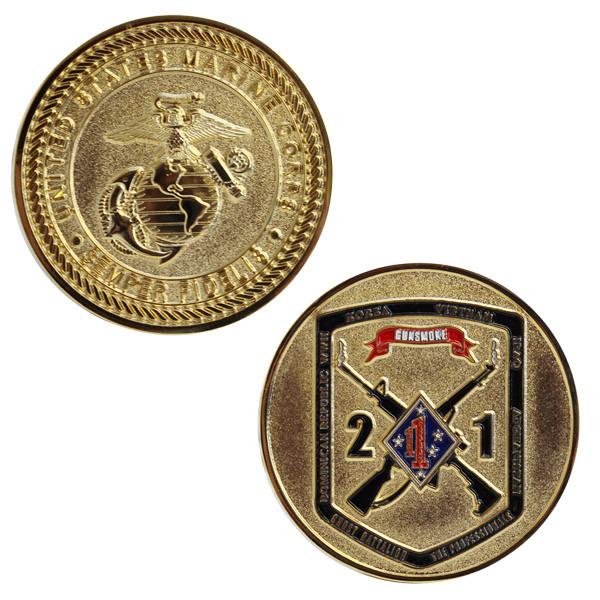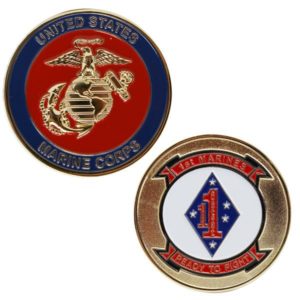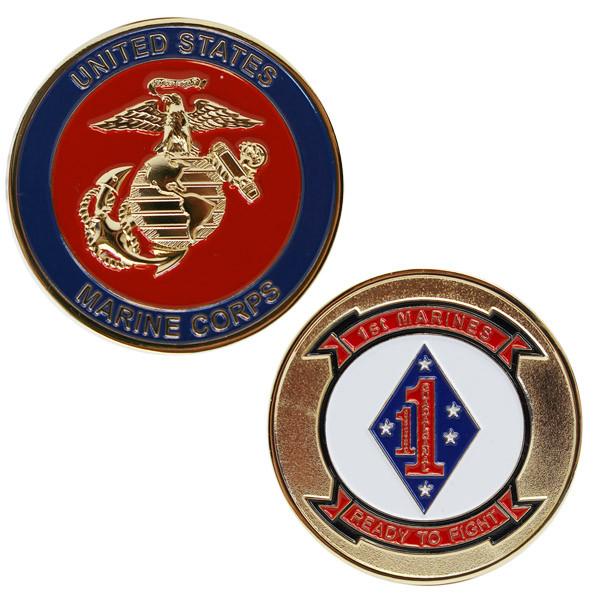Description
Our USMC 29 Palms License Plate Coin has the look and feel of genuine quality. Remember the good times you had at the ‘stumps’ whenever you look at this original coin sitting on your shelf. This unique coin would make a great addition to your challenge coin collection or as a special gift for your U.S. Marine. Arrives professionally & individually packaged. Made in USA.
Twentynine Palms Marine Corps License Plate Challenge Coin Features
- Marine Corps 29 Palms License Plate Coin
- “29 Palms – The Golden State” on the front of coin.
- “United States Marine Corps” and the Eagle Globe and Anchor on the back of coin.
- Accented in bold colors.
- Measures approximately 1.25″ width x 2.5″ height
- Individually packaged
- Made in USA
- Ships fast!
- Licensed by the U.S. Marine Corps.
Marine Corps Air Ground Combat Center (MCAGCC) – 29 Palms
The Marine Corps Air Ground Combat Center (MCAGCC), also known as 29 Palms, is the largest United States Marine Corps base. Located adjacent to the city of Twentynine Palms in San Bernardino County, California, it has a rich history and a significant role in Marine Corps training.
Initially used by the U.S. Army Air Force for flight training during World War II, the area was taken over by the Marine Corps in 1944. The base expanded significantly during the Korean War, emphasizing the need for live-fire training ranges. By 1957, it had grown to base status and was named Marine Corps Base, Twentynine Palms.
The base’s primary mission has been to train Marines for large-scale combined arms exercises. In 1976, an expeditionary airfield was added, and in 1978 the base was renamed the Marine Corps Air Ground Combat Training Center, reflecting its expanded capabilities. The introduction of the Tactical Exercise Control Center marked a significant advancement in training methods.
Currently, MCAGCC is home to one of the largest military training areas in the nation, hosting a variety of units including the 7th Marine Regiment and the 3rd Battalion 11th Marines. The training program known as Mojave Viper is a key part of pre-deployment training for operations in regions like Iraq and Afghanistan. The base features extensive live-fire exercise ranges, artillery, tank, and close air support training areas. Additionally, the “Combat Town” is a 274-acre fabricated Middle Eastern village used for immersive training experiences.
Geographically, MCAGCC Twentynine Palms is situated in the Mojave Desert’s High Desert region with a climate ranging from extreme heat to cold. This environment provides a unique and demanding setting for Marine training, preparing troops for diverse and challenging combat scenarios.
Marine Corps Challenge Coins
Marine Corps challenge coins are deeply rooted in military tradition. They symbolize honor, camaraderie, and individual accomplishments in the USMC.
Military challenge coins trace their roots back to ancient Rome, where custom coins rewarded exceptional feats. They later evolved into “portrait medals” during the Renaissance.
In the early US military, challenge coins were exclusive to high-ranking officers recognizing exceptional achievements. Notably, in World War I, a pilot’s coin saved his life by proving his identity. Some argue that modern challenge coin traditions, including in the Marine Corps, originated during the Vietnam War for bar entry.
Today, these coins signify specific achievements or service excellence and carry sentimental value, serving as tokens of significant moments in a Marine’s journey.
Marine Coin Check, Traditions, and Rules
A coin check is a spontaneous challenge where members must promptly display their coins.
Rules for coin checks are informal, allowing challenges to occur anywhere, anytime, by displaying the coin and shouting “coin check!” Accidentally dropping a coin counts as a deliberate challenge. Responding within ten seconds by presenting a unit’s coin is essential.
Consequences add a playful element: failure to produce a coin results in buying drinks for the challenger and others. Conversely, a successful challenge requires the challenger to buy a round for the group.
The tradition also includes coin theft, with successful thieves earning a drink. Coins are typically carried for easy access, with a widely accepted rule of “a step and a reach.” Presentation often occurs subtly during handshakes, with modifications like drilling holes or attaching them to belt buckles invalidating their challenge status.


